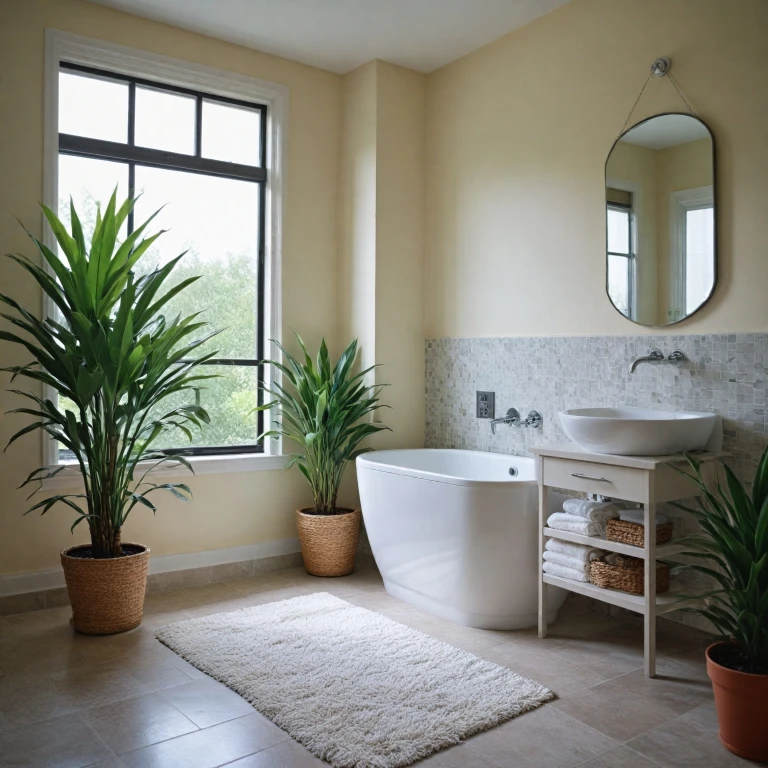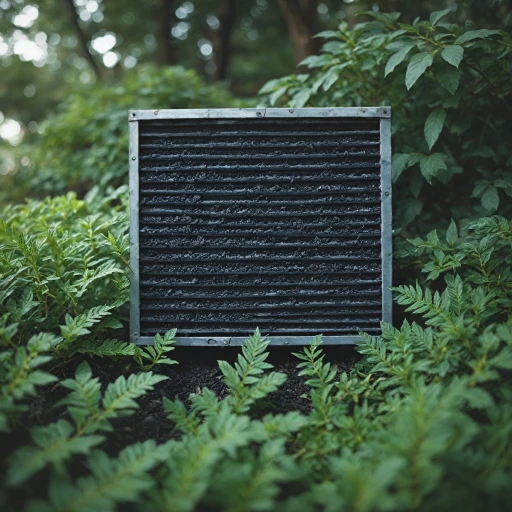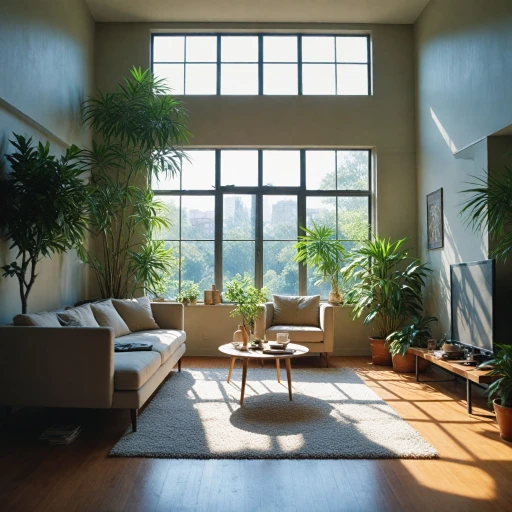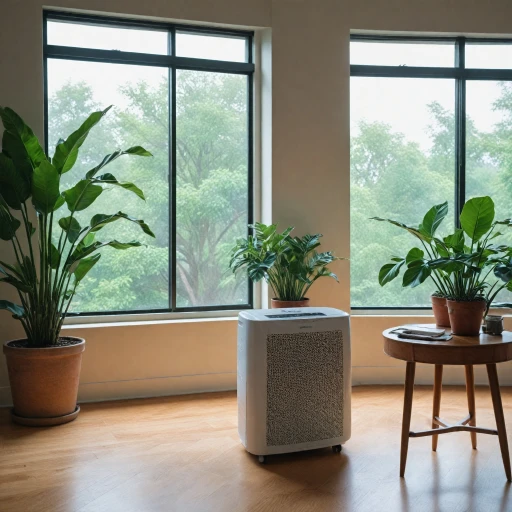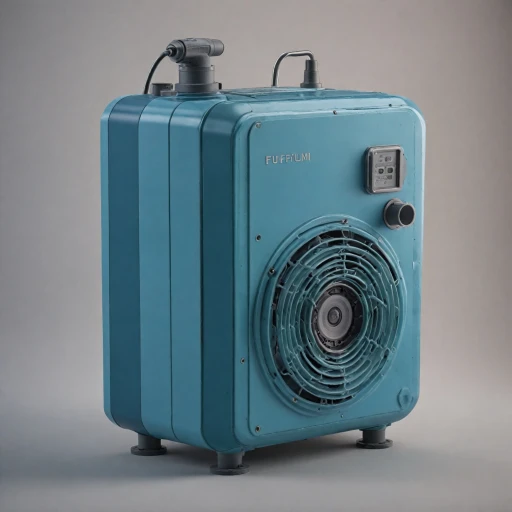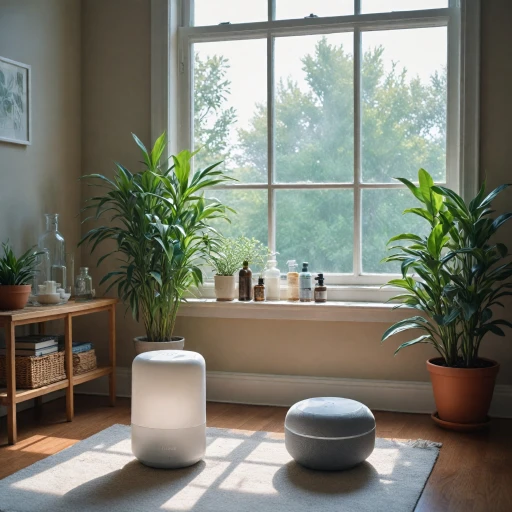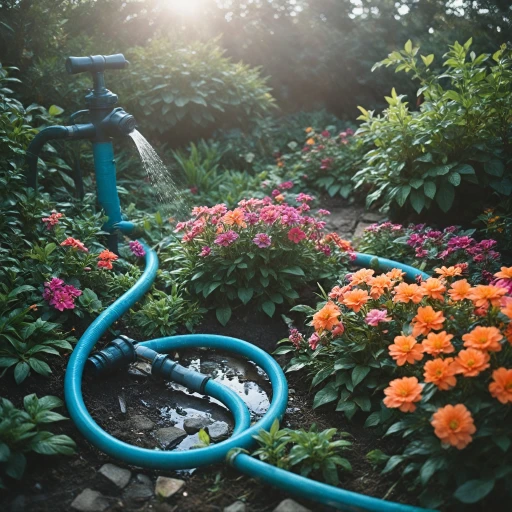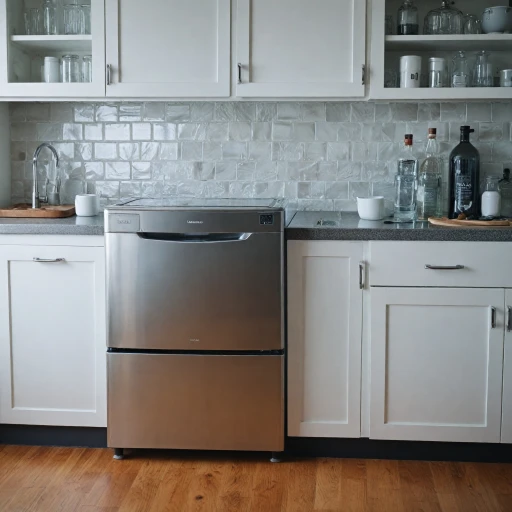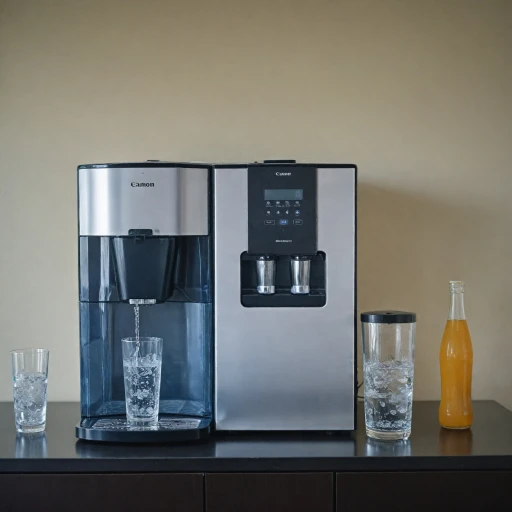Understanding Bathroom Air Quality Challenges
Key Air Quality Issues in Bathrooms
Bathrooms are notorious for their unique air quality issues. The primary challenges arise from excess moisture, which can lead to mold growth, and the presence of odors from personal care products. Additionally, small bathrooms often lack proper ventilation, allowing pollutants to accumulate. Addressing these issues is crucial for maintaining a healthy environment.
Moisture and Mold
The high humidity levels in bathrooms create the perfect breeding ground for mold spores and mildew. This not only affects surfaces but also compromises the air quality over time. Mold can release spores into the air, which are not just unpleasant but can pose serious health risks.
Odors and Chemicals
Bathrooms are frequently exposed to a variety of odors from cleaning agents, personal care products, and toiletries. Many of these products release volatile organic compounds (VOCs) into the air, contributing to indoor air pollution.
Ventilation Limitations
Most bathrooms are designed with minimal ventilation, like a small exhaust fan or a tiny window. These are often insufficient in thoroughly removing all moisture and pollutants, making air purifiers essential for enhancing bathroom air quality.
While air purifiers can greatly boost air quality by filtering out pollutants, integrating them requires choosing the right type and correctly installing them. By addressing these air quality challenges proactively, you pave the way for a cleaner and healthier space.
To explore additional methods to improve bathroom air quality, consider learning more about
enhancing your air quality with aromatherapy oils.
Benefits of Using an Air Purifier in the Bathroom
Improving Health and Comfort
Adding an air purifier to your bathroom can greatly improve air quality and overall comfort, particularly when dealing with persistent moisture issues. Air purifiers equipped with quality filters can help eliminate mold spores, which thrive in humid environments. By filtering out these harmful particles, the air in your bathroom becomes cleaner and healthier to breathe, reducing the risk of respiratory issues.
Reducing Unwanted Odors
Bathrooms can often harbor unpleasant odors due to poor ventilation. True HEPA filters and carbon filters within a purifier can substantially reduce these odors by trapping and neutralizing them. This provides a more refreshing and pleasant environment.
Combating Moisture-Related Problems
In addition to mold, bathrooms can also suffer from increased levels of smoke and volatile organic compounds (VOCs). Using an air purifier helps in reducing these compounds, ensuring a safer atmosphere. If you're keen to understand more about how purifiers tackle VOCs, check out our guide on
volatile organic compounds.
Ideal for Compact Spaces
Bathrooms are typically small spaces where an air purifier must work efficiently without being intrusive. Products like the Coway Airmega Mighty and Honeywell air purifiers are specially designed for small rooms. They offer excellent air cleaning capabilities with minimal noise level, perfect for keeping your bathroom environment serene and clean.
Enhancing Air Quality Consistently
Regular use of a bathroom air purifier ensures a consistent level of high-quality air. This can be particularly beneficial in high-traffic homes or when bathrooms serve as a shared workspace or homeowner office. Purifiers at affordable ranges, such as those available on platforms like Amazon, often come with several stars rating, indicating their performance efficacy as per user reviews.
By considering the above benefits, placing air purifiers in your bathroom can transform it from a typical room with poor air issues into a haven of clean and fresh air. Whether it's maintaining the standard of air quality or reducing allergens, the best portable air cleaner options are available to enhance your living room-like comfort in the bathroom.
Types of Air Purifiers Suitable for Bathrooms
Exploring Suitable Air Purifiers for Bathrooms
Choosing the right air purifiers for your bathroom can significantly improve air quality, tackling issues like mold and bathroom-specific odors. Here are some options to consider:
- HEPA Air Purifiers: Known for their exceptional filtration, HEPA filters capture particles as small as 0.3 microns, making them ideal for removing mold spores from the air. Their efficiency aligns with the demand for clean air standards in the small spaces typical of bathrooms.
- Carbon Filter Purifiers: These purifiers are effective at removing smoke, odors, and volatile organic compounds (VOCs), which can be prevalent in bathrooms due to various hygiene and cleaning products. By using activated carbon filters, they enhance the overall air quality.
- Portable Air Purifiers: When space is a constraint, compact offerings such as small air purifiers could be your best bet. Models like the Honeywell air purifier, rated with high stars on Amazon, exemplify products designed to discreetly fit and function in limited spots.
- Quiet Air Purifiers: For minimizing noise level impact, consider purifiers like the Coway Airmega and Airmega Mighty. These options are crafted to operate quietly, ensuring minimal disturbance while efficiently cleaning your air.
By selecting the right product, you ensure not only high air quality but also compliance with standard hygiene protocols. Be sure to consider both the purifier's placement and maintenance, as discussed further in the
importance of replacing air purifier filters. These considerations will lead to optimal performance and prolonged use.
Choosing the Right Air Purifier for Your Bathroom
Factors to Consider When Selecting Your Bathroom Air Purifier
Choosing the right air purifier involves evaluating several factors to ensure it meets your specific bathroom needs. Here are some important elements to consider:
- Size Compatibility: Bathrooms are usually smaller than other rooms in the house. It’s essential to select a portable air purifier that fits the space without compromising its efficiency. Products like the Coway Airmega Mighty are popular for small areas due to their compact design.
- Filter Type: High-efficiency particulate air (HEPA) filters are the industry standard for capturing tiny particles like mold and smoke. A true HEPA filter can remove up to 99.97% of airborne pollutants. Additionally, a carbon filter is beneficial for eliminating bathroom odors.
- Noise Level: Given the often-quiet atmosphere of a bathroom, consider air purifiers with low noise levels. Reading reviews on platforms like Amazon can offer insights into the noise performance of different models.
- Energy Efficiency: Look for products that offer good energy efficiency without compromising air quality. Many modern purifiers are designed to operate efficiently, even in small spaces like bathrooms.
- Brand and Reviews: Reputable brands such as Honeywell air purifiers often come with positive reviews and reliability. Assessing the number of stars on reviews can provide a snapshot of the product’s effectiveness and customer satisfaction.
- Additional Features: Some air purifiers come with added functionalities, such as smart controls or air quality sensors. These features can enhance the usability and effectiveness of the product in maintaining clean air in your bathroom.
Remember, a well-chosen air purifier can significantly improve air quality by effectively filtering out pollutants and ensuring a cleaner, healthier bathroom environment. Choose a product that aligns with the specific challenges and needs discussed previously in this blog post.
Installation and Maintenance Tips
Installation Procedures and Maintenance Guide
When setting up an air purifier in the bathroom, it's important to consider best practices for placement and ongoing maintenance. Proper installation and upkeep ensure your air purifier works efficiently, providing you with the clean air that contributes to better air quality.
Strategic Placement for Optimal Performance
- Position Wisely: Place the air purifier in a spot that allows unobstructed airflow. Avoid placing it behind doors or in corners where the air circulation might be limited.
- Near Pollutants: Aim to position the purifier near common pollution sources, such as near the laundry basket, to ensure quick action on odors and dampness.
- Ventilation Considerations: If your bathroom has a ventilation system or window, make sure the purifier complements these features without blocking the airflow.
Regular Maintenance Routine
- Filter Checks and Replacements: Regularly examine the purifier's filters, especially the HEPA filter, to ensure they're clean and functioning at their best. Most manufacturers, like Honeywell, recommend checking filters every three months, though usage in a small bathroom may necessitate more frequent checks.
- Cleaning Exterior: Keep the unit clean on the outside to avoid dust buildup, which can penetrate the grille and impact effectiveness.
- Noise Level Monitoring: If the noise level of your air purifier increases, it might indicate a clogged filter or internal issue. Address this promptly to maintain standard operation.
Troubleshooting Common Problems
- Mold and Moisture: Given the high humidity commonly found in bathrooms, check your purification system for any signs of mold. Utilize models with a combination of carbon filter and HEPA air capabilities for better mold and moisture control.
- Operational Stars: Keep track of the power light and other indicator lights on your unit—these provide visual cues you need to replace filters or address issues.
By strategically placing your air cleaner and maintaining a consistent maintenance schedule, you'll ensure your bathroom air quality remains top-notch. Not only does this protect against humidity-related issues, but it also safeguards your health by reducing pollutants and allergens.
Common Mistakes to Avoid
Oversights to Steer Clear of When Using Bathroom Air Purifiers
Utilizing an air purifier in a bathroom setting can significantly enhance air quality, but it's not without its pitfalls. Avoid these common mistakes to ensure your device functions at its optimal best and maintains a high air quality standard.
- Ignoring Placement Recommendations: Always place the air purifier in a convenient spot where it can operate effectively. Avoid squeezing it into a small corner or directly against walls, which could restrict efficiency and compromise the quality of air purification.
- Choosing the Wrong Type of Filter: For bathrooms, opting for a HEPA filter can be the best choice given its efficacy in handling mold and airborne particles. Ensure you are selecting a filter air purifier tailored to address specific impurities commonly found in bathrooms.
- Neglecting Regular Maintenance: Failing to change or clean your filter routinely can decrease the device's performance. Check the manufacturer's guide or the product specifications on platforms like Amazon to follow the best schedule for filter maintenance; some products even have filter replacement indicators.
- Overlooking Noise Level: Bathrooms might be small, yet crucial in choosing a purifier is its noise level, especially if installed close to a living room or office. Platforms like Amazon often have reviews with stars rating this feature, which can assist in selecting a suitable unit like the Honeywell Air Purifier known for quiet operation.
- Misjudging Product Capacity: Another oversight is selecting a purifier not matched to your bathroom's size. For small bathrooms, a portable air or small air purifier might suffice. Ensure your product meets the room's requirements by reviewing the product description, like with models from Coway Airmega or Airmega Mighty, both known for their efficiency in confined spaces.
By avoiding these common missteps, you're set to ensure the surrounding air remains clean and fresh with minimal interruptions. Remember that each purifier and its maintenance requirements can vary, so always check the manufacturer's instructions for specific guidelines.
